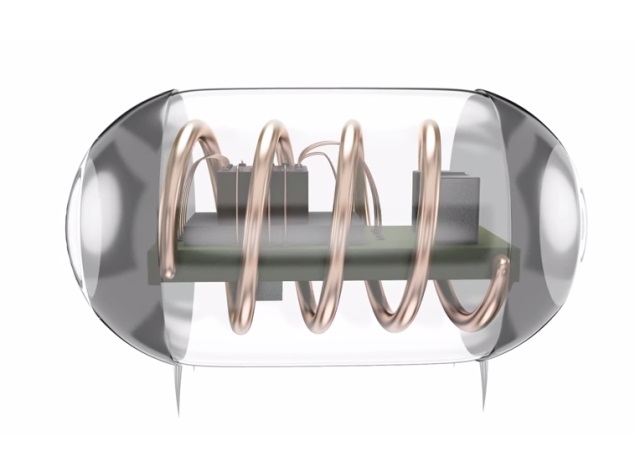- Home
- Science
- Science News
- Implanted Devices May Soon Be Charged Wirelessly With New Technology
Implanted Devices May Soon Be Charged Wirelessly With New Technology

The bulky batteries and clumsy recharging systems often prevent medical devices from being more widely used. The size of the device makes brain implants difficult.
"We need to make these devices as small as possible to more easily implant them deep in the body and create new ways to treat illness and alleviate pain," said Ada Poon, assistant professor of electrical engineering at Stanford University in the US.
The researchers built an electronic device smaller than a grain of rice that could act as a pacemaker.
It can be powered or recharged wirelessly by holding a power source about the size of a credit card above the device, outside the body.
The technology paves way for a new type of wireless power transfer - using roughly the same power as a cell phone - that can safely penetrate deep inside the body as the researchers discovered a new way to control electromagnetic waves inside the body.
This wireless charging system was tested in a pig and used it to power a tiny pacemaker in a rabbit.
The work created the potential to develop "electroceutical" treatments as alternatives to drug therapies, said William Newsome, director of the Stanford Neurosciences Institute.
The study appeared in the journal Proceedings of the National Academy of Sciences.
Get your daily dose of tech news, reviews, and insights, in under 80 characters on Gadgets 360 Turbo. Connect with fellow tech lovers on our Forum. Follow us on X, Facebook, WhatsApp, Threads and Google News for instant updates. Catch all the action on our YouTube channel.
Related Stories
- Samsung Galaxy Unpacked 2025
- ChatGPT
- Redmi Note 14 Pro+
- iPhone 16
- Apple Vision Pro
- Oneplus 12
- OnePlus Nord CE 3 Lite 5G
- iPhone 13
- Xiaomi 14 Pro
- Oppo Find N3
- Tecno Spark Go (2023)
- Realme V30
- Best Phones Under 25000
- Samsung Galaxy S24 Series
- Cryptocurrency
- iQoo 12
- Samsung Galaxy S24 Ultra
- Giottus
- Samsung Galaxy Z Flip 5
- Apple 'Scary Fast'
- Housefull 5
- GoPro Hero 12 Black Review
- Invincible Season 2
- JioGlass
- HD Ready TV
- Laptop Under 50000
- Smartwatch Under 10000
- Latest Mobile Phones
- Compare Phones
- Vivo Y500 Pro
- Realme GT 8 Pro Aston Martin F1 Limited Edition
- Huawei Mate 70 Air
- Moto G57
- Moto G57 Power
- Motorola Edge 70
- Moto G Play (2026)
- Moto G (2026)
- MacBook Pro 14-inch (M5, 2025)
- Asus Vivobook S16 (S3607QA)
- iQOO Pad 5e
- OPPO Pad 5
- Noise Diva 2
- Noise Halo 2
- Acerpure Nitro Z Series 100-inch QLED TV
- Samsung 43 Inch LED Ultra HD (4K) Smart TV (UA43UE81AFULXL)
- Asus ROG Ally
- Nintendo Switch Lite
- Haier 1.6 Ton 5 Star Inverter Split AC (HSU19G-MZAID5BN-INV)
- Haier 1.6 Ton 5 Star Inverter Split AC (HSU19G-MZAIM5BN-INV)
















